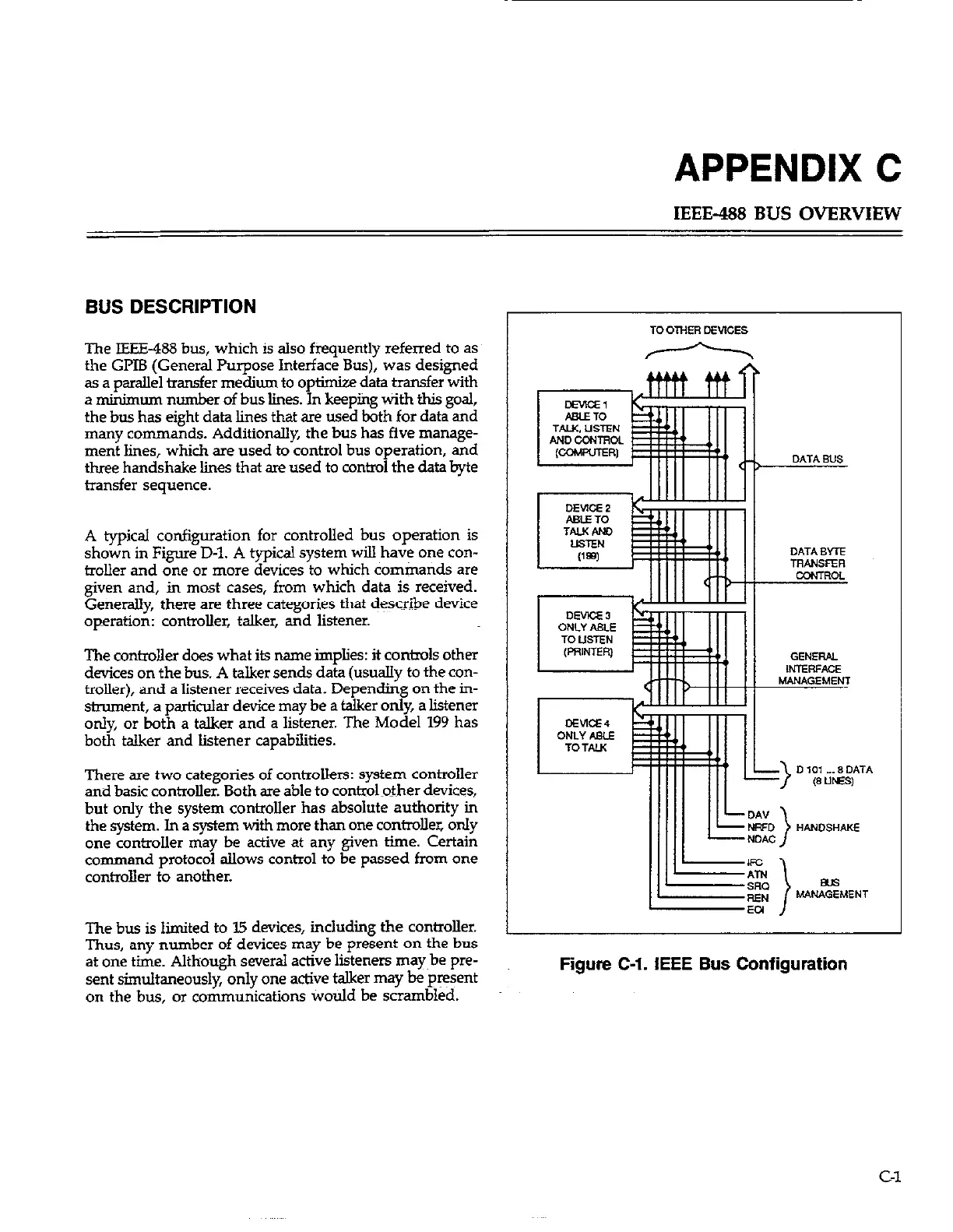APPENDIX C
IEEE-488 BUS OVERVIEW
BUS DESCRIPTION
The IFEE- bus, which is also frequently referred to as
the GPlB (General Purpose Interface Bus), was designed
as a parallel transfer medium to optimize data transfer with
a minimum number of bus lines. In keeping with this goal,
the bus has eight data lines that are used both for data and
many commands. Additionally, the bus has five rnanage-
ment lines, which are used to control bus operation, and
three handshake lines that are used to control the data byte
transfer sequence.
A typical configuration for controlled bus operation is
shown in Figure D-l. A typical system will shave one con-
troller and one or more devices to which commands are
given and, in most cases, from which data is received.
Generally, there are three categories that d:scn?oe device
operation: controller, talker, and listener.
The contdler does what its name implies: it controls other
devices on the bus. A talker sends data (usually to the con-
troller), and a listener receives data. Depending on the in-
strument, a particular device may be a talker only, a listener
only, or bath a talker and a listener. The Model 199 has
both talker and listener capabilities.
There are two categories of controllers: system controller
and basic controller. Both are able to controlother devices,
but only the system controller has absolute authority in
the system. In a system with more than one controller, only
one controller may be active at any given time. Certain
command protocol allows control to be passed from one
controller to another.
The bus is limited to 15 devices, including the controller.
Thus, any number of devices may be present on the bus
at one time. Although several active listeners may~be pre-
sent sinwitaneously, only one active talker may be present
on the bus, or communications would be scrambled.
Figure C-l. IEEE Bus Configuration
C-l
